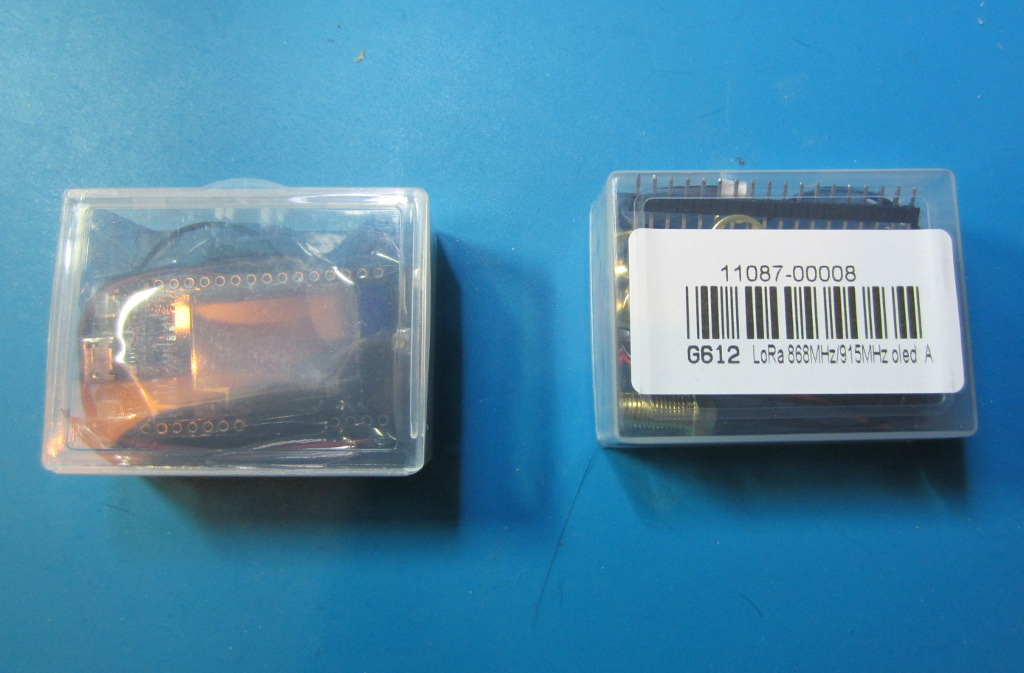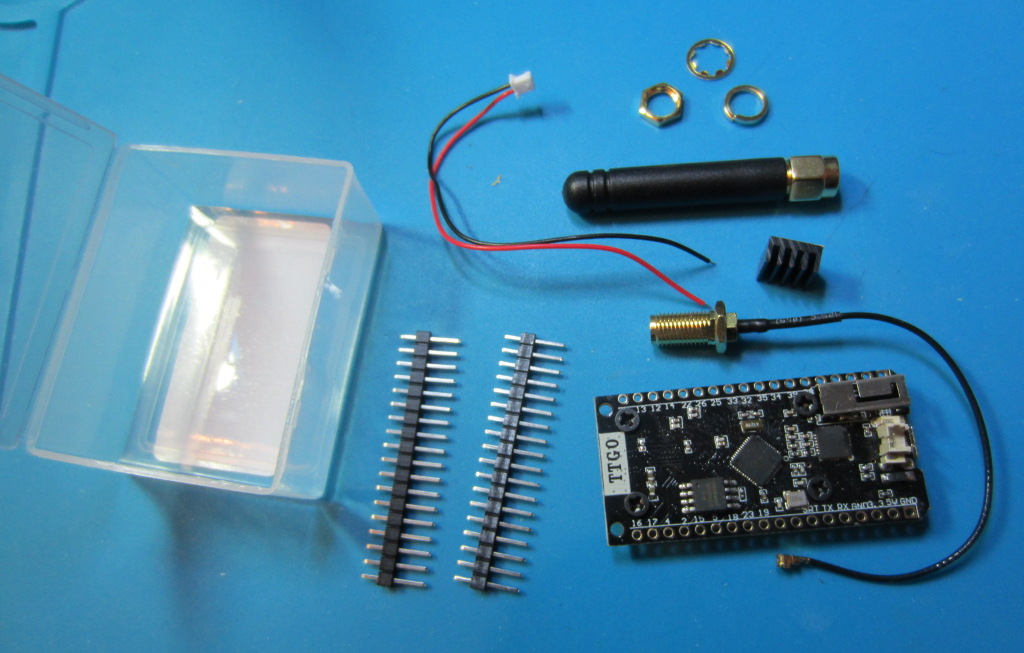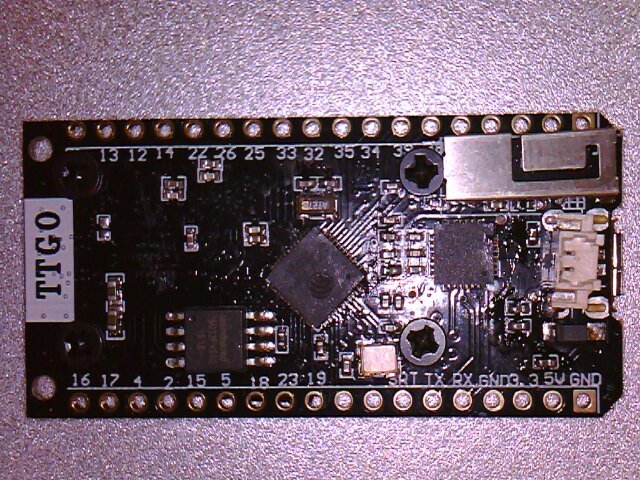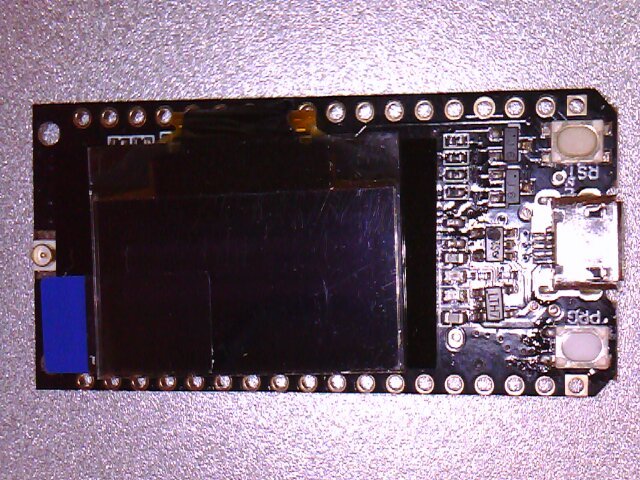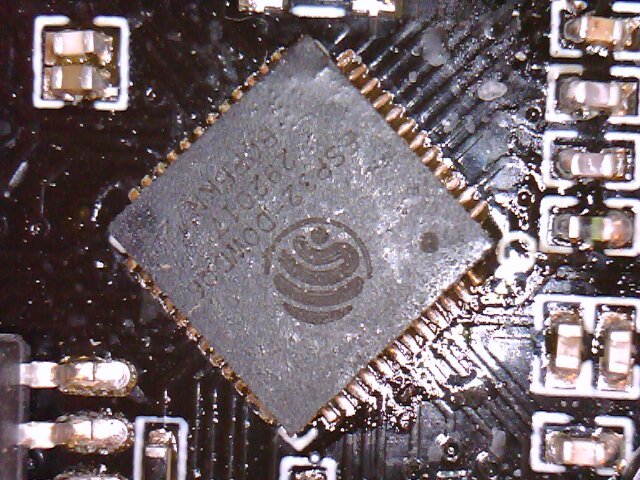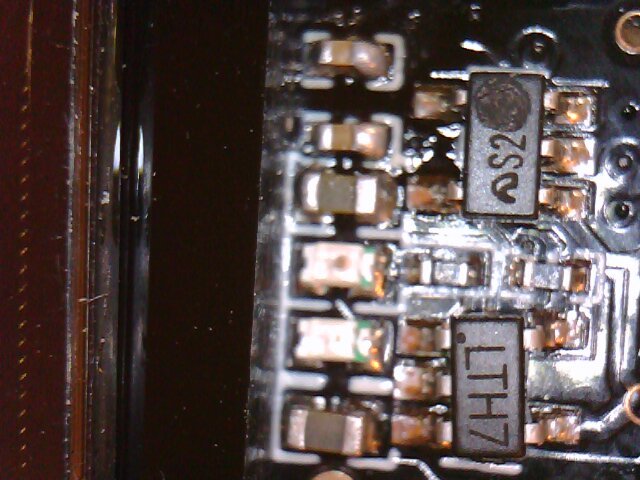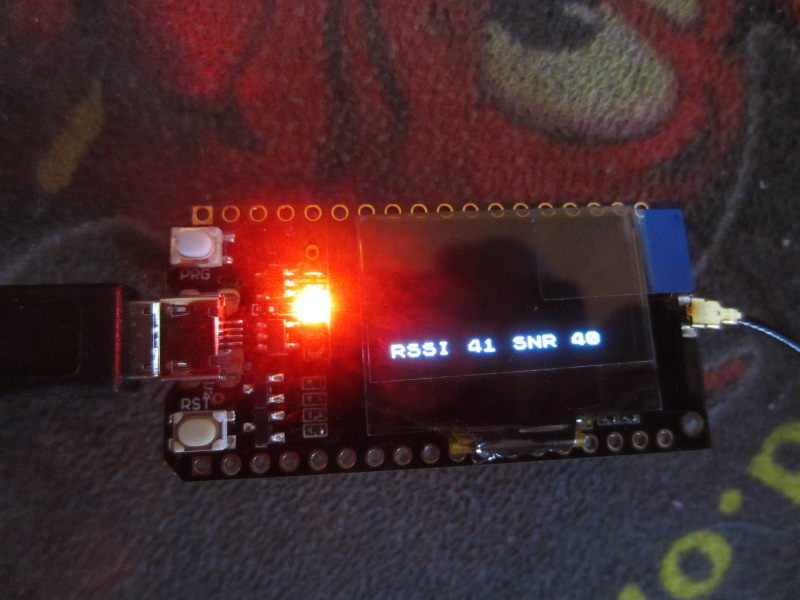#include <lmic.h>
#include <hal/hal.h>
#include <SPI.h>
#include <U8x8lib.h>
#define BUILTIN_LED 25
// the OLED used
U8X8_SSD1306_128X64_NONAME_SW_I2C u8x8(/* clock=/ 15, / data=/ 4, / reset=*/ 16);
// This EUI must be in little-endian format, so least-significant-byte
// first. When copying an EUI from ttnctl output, this means to reverse
// the bytes. For TTN issued EUIs the last bytes should be 0xD5, 0xB3,
// 0x70.
static const u1_t PROGMEM APPEUI[8] = { 0xFF, 0xFF, 0xFF, 0xFF, 0xFF, 0xD5, 0xB3, 0x70 };
void os_getArtEui (u1_t* buf) {
memcpy_P(buf, APPEUI, 8);
}
// This should also be in little endian format, see above.
static const u1_t PROGMEM DEVEUI[8] = { 0x00, 0x00, 0x00, 0x00, 0x00, 0x00, 0x00, 0x00 };
void os_getDevEui (u1_t* buf) {
memcpy_P(buf, DEVEUI, 8);
}
// This key should be in big endian format (or, since it is not really a
// number but a block of memory, endianness does not really apply). In
// practice, a key taken from ttnctl can be copied as-is.
// The key shown here is the semtech default key.
static const u1_t PROGMEM APPKEY[16] = { 0x00, 0x00, 0x00, 0x00, 0x00, 0x00, 0x00, 0x00, 0x00, 0x00, 0x00, 0x00, 0x00, 0x00, 0x00, 0x00 };
void os_getDevKey (u1_t* buf) {
memcpy_P(buf, APPKEY, 16);
}
static uint8_t mydata = “Hi”;
static osjob_t sendjob;
// Schedule TX every this many seconds (might become longer due to duty
// cycle limitations).
const unsigned TX_INTERVAL = 30;
// Pin mapping
const lmic_pinmap lmic_pins = {
.nss = 18,
.rxtx = LMIC_UNUSED_PIN,
.rst = 14,
.dio = {26, 33, 32},
};
void onEvent (ev_t ev) {
Serial.print(os_getTime());
u8x8.setCursor(0, 5);
u8x8.printf(“TIME %lu”, os_getTime());
Serial.print(": ");
switch (ev) {
case EV_SCAN_TIMEOUT:
Serial.println(F(“EV_SCAN_TIMEOUT”));
u8x8.drawString(0, 7, “EV_SCAN_TIMEOUT”);
break;
case EV_BEACON_FOUND:
Serial.println(F(“EV_BEACON_FOUND”));
u8x8.drawString(0, 7, “EV_BEACON_FOUND”);
break;
case EV_BEACON_MISSED:
Serial.println(F(“EV_BEACON_MISSED”));
u8x8.drawString(0, 7, “EV_BEACON_MISSED”);
break;
case EV_BEACON_TRACKED:
Serial.println(F(“EV_BEACON_TRACKED”));
u8x8.drawString(0, 7, “EV_BEACON_TRACKED”);
break;
case EV_JOINING:
Serial.println(F(“EV_JOINING”));
u8x8.drawString(0, 7, “EV_JOINING”);
break;
case EV_JOINED:
Serial.println(F(“EV_JOINED”));
u8x8.drawString(0, 7, "EV_JOINED ");
// Disable link check validation (automatically enabled
// during join, but not supported by TTN at this time).
LMIC_setLinkCheckMode(0);
break;
case EV_RFU1:
Serial.println(F(“EV_RFU1”));
u8x8.drawString(0, 7, “EV_RFUI”);
break;
case EV_JOIN_FAILED:
Serial.println(F(“EV_JOIN_FAILED”));
u8x8.drawString(0, 7, “EV_JOIN_FAILED”);
break;
case EV_REJOIN_FAILED:
Serial.println(F(“EV_REJOIN_FAILED”));
u8x8.drawString(0, 7, “EV_REJOIN_FAILED”);
//break;
break;
case EV_TXCOMPLETE:
Serial.println(F(“EV_TXCOMPLETE (includes waiting for RX windows)”));
u8x8.drawString(0, 7, “EV_TXCOMPLETE”);
digitalWrite(BUILTIN_LED, LOW);
if (LMIC.txrxFlags & TXRX_ACK) {
Serial.println(F(“Received ack”));
u8x8.drawString(0, 7, “Received ACK”);
}
if (LMIC.dataLen) {
Serial.println(F(“Received “));
u8x8.drawString(0, 6, “RX “);
Serial.println(LMIC.dataLen);
u8x8.setCursor(4, 6);
u8x8.printf(”%i bytes”, LMIC.dataLen);
Serial.println(F(” bytes of payload”));
u8x8.setCursor(0, 7);
u8x8.printf(“RSSI %d SNR %.1d”, LMIC.rssi, LMIC.snr);
}
// Schedule next transmission
os_setTimedCallback(&sendjob, os_getTime() + sec2osticks(TX_INTERVAL), do_send);
break;
case EV_LOST_TSYNC:
Serial.println(F(“EV_LOST_TSYNC”));
u8x8.drawString(0, 7, “EV_LOST_TSYNC”);
break;
case EV_RESET:
Serial.println(F(“EV_RESET”));
u8x8.drawString(0, 7, “EV_RESET”);
break;
case EV_RXCOMPLETE:
// data received in ping slot
Serial.println(F(“EV_RXCOMPLETE”));
u8x8.drawString(0, 7, “EV_RXCOMPLETE”);
break;
case EV_LINK_DEAD:
Serial.println(F(“EV_LINK_DEAD”));
u8x8.drawString(0, 7, “EV_LINK_DEAD”);
break;
case EV_LINK_ALIVE:
Serial.println(F(“EV_LINK_ALIVE”));
u8x8.drawString(0, 7, “EV_LINK_ALIVE”);
break;
default:
Serial.println(F(“Unknown event”));
u8x8.setCursor(0, 7);
u8x8.printf(“UNKNOWN EVENT %d”, ev);
break;
}
}
void do_send(osjob_t* j) {
// Check if there is not a current TX/RX job running
if (LMIC.opmode & OP_TXRXPEND) {
Serial.println(F(“OP_TXRXPEND, not sending”));
u8x8.drawString(0, 7, “OP_TXRXPEND, not sent”);
} else {
// Prepare upstream data transmission at the next possible time.
LMIC_setTxData2(1, mydata, sizeof(mydata) - 1, 0);
Serial.println(F(“Packet queued”));
u8x8.drawString(0, 7, “PACKET QUEUED”);
digitalWrite(BUILTIN_LED, HIGH);
}
// Next TX is scheduled after TX_COMPLETE event.
}
void setup() {
Serial.begin(115200);
u8x8.begin();
u8x8.setFont(u8x8_font_chroma48medium8_r);
u8x8.drawString(0, 1, “LoRaWAN LMiC”);
SPI.begin(5, 19, 27);
// LMIC init
os_init();
// Reset the MAC state. Session and pending data transfers will be discarded.
LMIC_reset();
// Start job (sending automatically starts OTAA too)
do_send(&sendjob);
pinMode(BUILTIN_LED, OUTPUT);
digitalWrite(BUILTIN_LED, LOW);
}
void loop() {
os_runloop_once();
}


